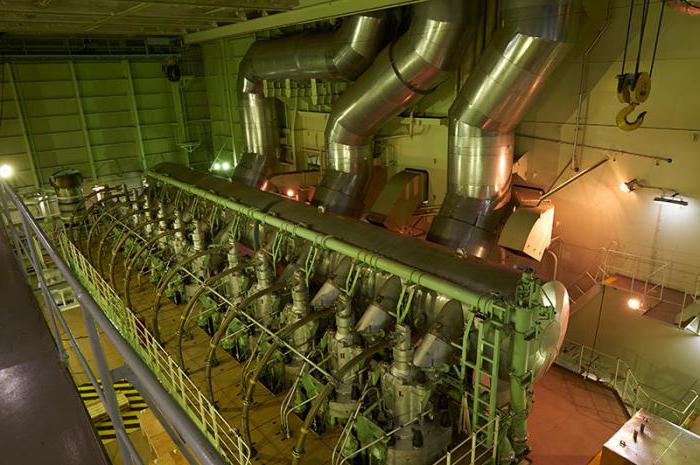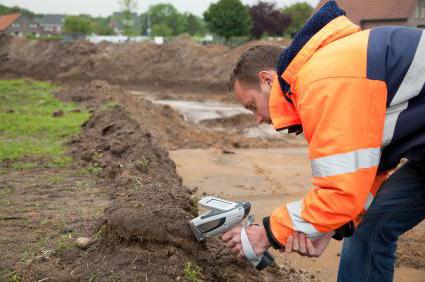It's no secret that the nature surrounding us is subject to the negative effects of human activity. In theory and practice, environmental rationing is that defining protective barrier to the permissible level of change and the human impact on its properties that the natural environment needs.
The value of environmental regulation
It is worth noting the importance of such an important concept in considering this issue as the quality of the natural environment. It means the level of compliance of its basic features and characteristics with the vital needs of the population, technological needs in various industries. In turn, these scientific and technical requirements are fully consistent with the Russian legislation on environmental protection. Environmental regulation and standardization of OPS is a system of by-laws, containing a fairly detailed specification of the conditions for its quality. Among them are state standards (GOS), decrees, orders, instructions, etc.
In the field of environmental protection, environmental regulation establishes:
- fundamental norms, requirements, instructional rules for incoming products, provided services and works, applied control methods;
- real prohibitions and restrictions on the implementation of economic activity in order to prevent and stop its negative detrimental effect on the nature adjacent to the main harmful outbreak;
- legal relations arising in the field of environmental protection management.
Thus, in order to obtain permission to organize any production process, it is mandatory to go through a procedure to determine compliance with environmental standards.
International standardization
The principles of environmental regulation in force in a given state are usually developed on the basis of international treaties, standards and rules, taking into account the achievements of the current technological process. It follows that no state standard can be adopted outside the appropriate limit of requirements and norms in the environmental sector. This applies to GOSTs for imported household appliances, building materials, various technologies and many categories of other goods, as well as the processes of storage, processing, transportation, operation and disposal associated with them.
State bodies responsible for environmental safety
The basics of environmental regulation are accepted for implementation by approval of authorized state bodies. These include the sanitary-epidemiological service, the State Committee of the Russian Federation for Standardization and Metrology, often referred to by the people as Gosstandart. Only after they have approved all the rules, regulations and instructions become legal and require strict observance.
According to some environmental laws of the modern Russian Federation, environmental regulation and standardization, which determine the quality level of the environment, can provide:
- maximum public safety;
- saving the natural genetic fund of all living things (plants, animals, humans);
- rational use of subsoil resources in the territory of the state and their corresponding probable recreation.
On the systematization of environmental control standards
Ecostandards are designed for application and implementation in many areas, including forecasting and environmental control, planning of natural resource extraction, programming, environmental audit, examination, etc. In today's conditions, the environmental regulation system consists of several complex indicators, classified according to to the groups described below.
Extreme limiting characteristics, demonstrating the criticality of a certain degree of influence on the environment and man. The medical, biological, socio-economic and environmental results of exceeding such boundaries, in accordance with modern scientific research, are catastrophic and cannot be tolerated.  Such criteria are strict strict measures that are mandatory to fulfill in the course of solving project tasks, drawing up an economic development plan, etc.
Such criteria are strict strict measures that are mandatory to fulfill in the course of solving project tasks, drawing up an economic development plan, etc.
Territorial zoning
This procedure is necessary to establish control over the use of resources of a particular territory of each Russian region. Zoning helps to determine the functional purpose of natural reserves and the establishment of restrictions on their production and use.
Environmental regulation of environmental quality, in particular, territorial zoning, is an important condition for maintaining natural balance and proper use of the resources provided to people.
Environmental Quality Standards
The category of quality standards is an indicator of the state of the environment. The main feature of these criteria is their temporary effect. As a rule, this is regulated by the legislative method, and at the end of their validity, the standards are subject to replacement. However, practice shows that often changes occur with a tendency to tighten certain norms.
In addition, they can only act on specified functional territorial zones. Thus, the objects of environmental regulation are the results of the impact of economic sectors not only on individual natural complexes and natural reserves, but also the health of the bulk of the population.
This category of standards for the qualitative characteristics of the environment allows us to identify a number of varieties. Moreover, the types of environmental regulation in the environmental field require detailed consideration.
Tolerance limit of harmful substances
The first thing you should not miss is the normative indicators of the maximum concentration level. harmful substances capable of adversely affecting the state of natural environments and human health. These include chemical, toxic substances, viruses, parasitic microorganisms. The acceptable amount of pollutant in the atmosphere, soil, water bodies is considered to be that which, with regular or periodic impact on the human body, does not have a detrimental effect, does not affect the state of health and does not cause negative consequences for the born offspring.
The prevailing part of the standards is sanitary and hygienic in nature. They are called for compliance in order to ensure the proper level of environmental safety of the population.
Turning to history, it should be noted that Russia became one of the first states to take into account the concept of environmental regulation. In the 20s of the last century, the first plants were constructed here to identify the limit of the permissible concentration of harmful substances released into the atmosphere of the working area. Only a decade later, MPC analogues appeared in the USA and Germany.
Sanitary standards drinking resources
The second group of standards is the criteria and requirements for the quality of drinking water. On the territory of the Russian state in this matter they turn to sanitary rules and regulations. SanPiN - a set of recorded conditions and requirements put forward for the characteristics of drinking water, adopted back in 1996. It regulates and determines the permissible level of bacteria, trace elements, gases, substances of organic and inorganic origin contained in water. The general list of prohibited content includes about 2000 items, among which about 200 from this list, which are in tested water, make the source prohibited for drinking and domestic needs. Particularly harmful and dangerous elements present in water are chlorine, petroleum products and their residues, nitrates, etc.
SanPiN - a set of recorded conditions and requirements put forward for the characteristics of drinking water, adopted back in 1996. It regulates and determines the permissible level of bacteria, trace elements, gases, substances of organic and inorganic origin contained in water. The general list of prohibited content includes about 2000 items, among which about 200 from this list, which are in tested water, make the source prohibited for drinking and domestic needs. Particularly harmful and dangerous elements present in water are chlorine, petroleum products and their residues, nitrates, etc.
The limit of technogenic impacts
The third separate category includes norms that determine the limits of acceptable levels of impacts of anthropogenic origin. The principles of environmental standardization of indicators of the specified area determine the degree of influence of radiation, noise threshold, excessive vibration, harmful magnetic fields on natural ones.
In most modern countries, the optimal noise level during the day is considered to be 55 decibels. However, at night the limit bar goes down by 10 decibels, reaching 45 decibels. On large highways, where noise can not be avoided, the permitted level is 65 decibels.
Environmental load limit
The fourth regulatory subsection consists of indicators that allow the tolerance of the maximum load on the natural environment.
We are talking about a multitude of anthropogenic factors, when they are exerted on natural complexes and resources, there is no violation of the integrity and stability of the latter. The purpose of environmental regulation with the determination of the maximum degree of pressure on nature management is a clear establishment of limit restrictions for the timely adoption of necessary measures for the conservation of ecosystems.
The most common normative parameters of PDN are restrictions on forest use, quotas for the shooting of wild animals and fishing, the provision of a certain number of opportunities to visit nature reserves and protected natural areas.
Sanitary areas
The fifth group includes norms establishing rules in sanitary zones. Such environmental regulation allows you to protect water bodies, especially those intended for mass water supply, to preserve the purity of unique protected areas, health-improving, resort areas, by carrying out preventive measures to save them from negative anthropogenic and industrial influences. Also, specialized protective and sanitary zones have been established in the vicinity of landfills and organizations involved in the disposal and disposal of waste with high toxicity.
In Russia, the width of such sanitary strips reaches 500 meters. Most often they can be found on the coastal sections of rivers, lakes, reservoirs. Protecting water bodies that are rich in fish resources from chemical substances, they allot a 200-meter sanitary protection zone with a ban on the storage and use of various toxic products. In addition to all such precautionary measures contribute to a significant improvement in the hydrological regime.
Emission environmental regulation
The maximum permissible emissions and discharges related to emission standards are many harmful microorganisms or biologically active elements that can significantly pollute the atmosphere, nearby water bodies and soil.
In the production process at enterprises, especially the industrial sector, emissions or discharges of harmful substances are allowed only in maximum restrictions. Limits are set by calculating the possible concentration of adverse substances that do not violate the quality of the environment and exclude the possibility of irreversible consequences.
However, in case of exceeding the permissible level of emissions of substances in settlements and the objective impossibility of reaching the relevant factors by the enterprises located there, such organizations may receive permission to establish inconsistent temporary emissions, provided that a gradual decrease in high rates to the corresponding values is guaranteed.
World Standards and ISO 14000
Environmental regulation of safety requirements for products sold. According to the legislative acts of the Russian Federation in the environmental field, these requests for product quality are required to comply with the standards of all permitted levels of environmental impact in the production process, during long-term storage, transportation and use of goods. Also, in almost all world countries, the content of permitted chemicals in food is regulated without fail. The recommendations are prepared not only by the internal environmental authorities of the state, but also by international influential expert communities (FAO, WHO).
In addition to the composition of food products, restrictions are also set on the level of discharge from polymeric materials that come into contact with drinking water, drinks and food.
The implementation of complicated tasks in the field of environmental protection and the provision of an appropriate level of safety for the environment is required in the modernization of existing regulatory documents and the adoption of additional ones. The solution to this issue was some of the standards presented below.
Environmental regulation of the environment includes standardized indicators governing the functioning of the environmental management system in manufacturing enterprises. EMAX and ISO I4000 standards are internationally popular.
The first series is mainly used in EU countries. Since 1998, a similar standardized chain based on the second ISO I4000 complex has been operating in Russia. The domestic version is called GOST R ISO 14000. These standards differ in terms of standardization. Here they are non-specific, individually taken characteristics and requirements for manufactured goods or the production process. Such standardization affects the entire organizational and managerial mechanism.
Thanks to such a system of ensuring environmental safety, environmental requirements imply compliance with the rules at all stages of manufacture: from procurement and supply of basic raw materials to the final sale of finished products and the proper disposal of goods that have served their time.
